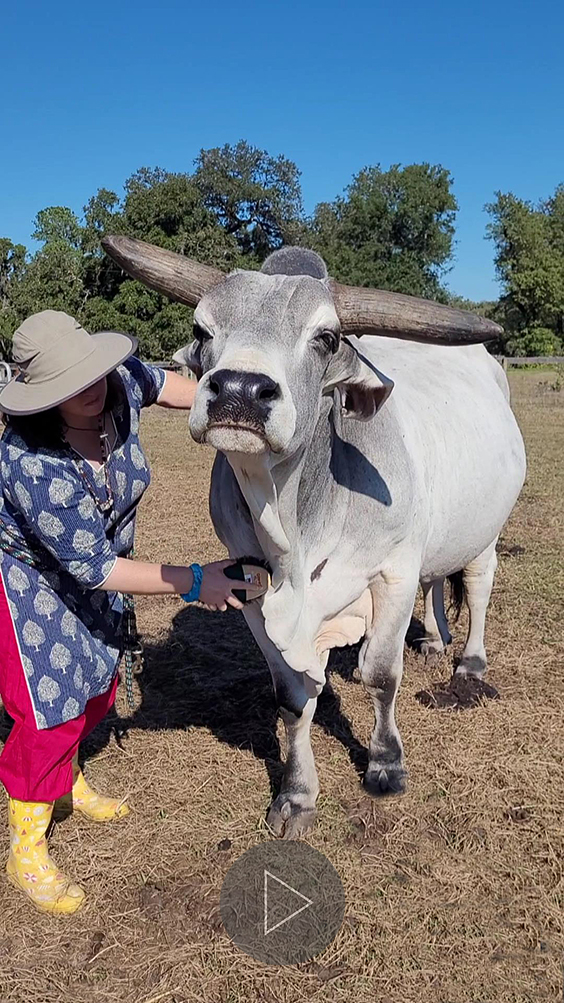- ISCOWP E-newsletters
In 2008, ISCOWP members rescued three cows: Priyavrata, Sri Uddharan Datta Thakur, and Amrita. Balabhadra, the president of ISCOWP...

The rescued oxen got excited, fighting and shoving. Some of the cows had fun too, running and kicking their heels up in the air! The merged two herds almost ran over the cowherds! It took a few days for the excited rescued cows to calm down and everyone to develop new friendships.
We merged the two herds of young and old rescued cows to make room for new cows. In honor of the cows who passed away last year, we plan to rescue one or two new cows in the next month. We do not yet know the exact time but will let everyone know via this e-newsletter when we are ready.
We are constantly trying new ways of presenting cow protection because digital technology is continually changing. For instance, Shorts or Reels are the latest means of communication on social media. Therefore, we are experimenting with this format. For example, here is a Reel (Instagram) and Short (YouTube) about staff member Lakshmi brushing Priya.

You can look at our Instagram and Facebook pages to view more experiments with this format. Please leave comments or suggestions to improve and enhance our attempts at this new format. Any requested subject topics?
One place we could go to rescue a cow is a breeder of exotic cows. Breeders of exotic cows, such as Brahmans, sell their cows for beef or breeding stock. They do not separate a calf from its mother as early as in a dairy. Instead, they keep calves with their mothers for about six months. The reason is that the breeder’s profit comes from keeping the mothers healthy, and the breeder has no need for milk. Mastitis (an udder infection that can lead to death) can develop if the breeder prematurely stops the mother from nursing her baby. When the mother can no longer breed, the breeder sells her for meat. Similar to a dairy, the breeder keeps few males and sells them early in life for meat.
Another place we could go to rescue a cow or calf would be the auction barn or sale barn. Unfortunately, the next phase in life for many cows at the auction barn is to become meat unless some kind soul takes them home. There are three classes of cows for sale at an auction barn, Feeders (fatten for meat), Live ( sold directly for meat), Replacement cows (cows in decent health to augment existing herds). The auction barn contains stressed animals crowded in pens which often results in health problems. We went once to an auction barn in Pennsylvania and came back with eight calves. One died within the year of the eight calves we rescued, and Meenakshi died within seven years.
Our vet in West Virginia said at the time, “It is good you got eight calves as one, or two calves probably won’t make it.” He said the mortality rate is high because of the stress the animals’ experience and the possibility of any illness spreading due to crowded conditions.

The bottom line is that when cows can not produce milk and babies, their owner sells them for meat. The boys or bull calves are either sold very early in life to the veal factory or directly to the meat industry or to the auction barn to be fattened up for slaughter by the buyer. Exotic cows rarely appear in auction barns and are expensive.

7016 SE 92 Terrace
Gainesville, FL 32641 USA
Phone: 352-792-6777
E-mail ISCOWP
Keep up with the latest news from ISCOWP. Sign up with your e-mail address to receive updates.
"*" indicates required fields
© 2023 This is the only official site of The International Society for Cow Protection, Inc. (ISCOWP) incorporated in 1990, located only in Gainesville, FL, USA. ISCOWP and The Lotus/Cow symbol are registered service marks of The International Society for Cow Protection, Inc. Website content can not be reproduced without permission.